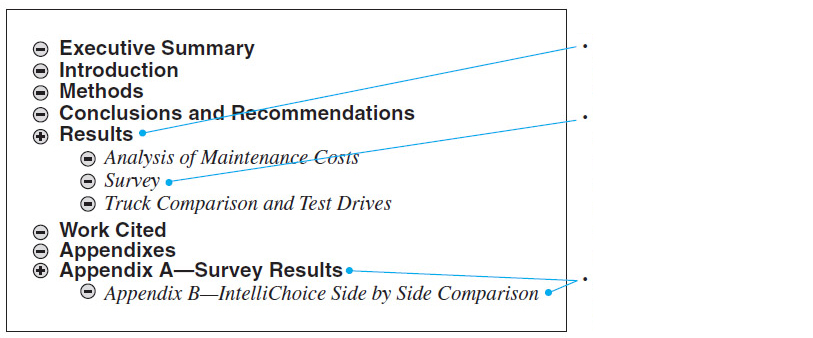Revising
Printed Page 52-54
Revising
Revising is the process of looking again at your draft to see whether it works. After you revise, you will carry out two more steps—editing and proofreading—but at this point you want to focus on three large topics:
- Audience. Has your understanding of your audience changed? Will you be addressing people you hadn’t considered before? If so, how will that change what you should say and how you should say it?
- Purpose. Has your understanding of your purpose changed? If so, what changes should you make to the document?
- Subject. Has your understanding of the subject changed? Should you change the scope—that is, should you address more or fewer topics? Should you change the organization of the document? Should you present more evidence or different types of evidence?
On the basis of a new look at your audience, purpose, and subject, you might decide that you need to make minor changes, such as adding one or two minor topics. Or you might decide that you need to completely rethink the document.
There are two major ways to revise: by yourself and with the assistance of others. If possible, use both ways.
STUDYING THE DRAFT BY YOURSELF
The first step in revising is to read and reread your document, looking for different things each time. For instance, you might read it once just to see whether the information you have presented is appropriate for the various audiences you have identified. You might read it another time to see whether each of your claims is supported by appropriate and sufficient evidence.
Start with the largest, most important problems first; then work on the smaller, less important ones. That way, you don’t waste time on awkward paragraphs you might eventually decide to delete. Begin by reviewing the document as a whole (for organization, development, and content), saving the sentence-level concerns (such as grammar, punctuation, and spelling) for later.
One effective way to review your whole document for coherence is to study the outline view of the document. Figure 3.1 shows how the outline view helps you see how the document is organized.
The writer has set the outline view to show the first two levels of his report. Using the outline view, it is easy to identify organization problems:
The results section should precede the conclusions and recommendations section.
In the results section, the second item—survey—seems to be different from the other two items, both of which seem to relate to the topic of the vehicles, not to the methods the writer used.
Appendix A and Appendix B should both be second-level headings.

After you have studied your draft to see if there are problems with its organization, study it to answer six additional questions:
- Have I left out anything in turning my outline into a draft?
- Have I included all the elements my readers expect to see?
- Is the document persuasive?
- Do I come across as reliable, honest, and helpful?
- Have I presented all the elements consistently?
- Is the emphasis appropriate throughout the document?
SEEKING HELP FROM OTHERS
For technical documents, it is best to turn to two kinds of people for help. Subject-matter experts (SMEs) can help you determine whether your facts and explanations are accurate and appropriate. If, for instance, you are writing about fuel-cell automobiles, you could ask an automotive expert to review your document. Important documents are routinely reviewed by technical experts before being released to the public.
The second category of reviewers includes both actual users of your existing document and prospective users of the next version of the document. These people can help you see problems you or other knowledgeable readers don’t notice. For instance, a prospective user of a document on fuel-cell technologies might point out that she doesn’t understand what a fuel cell is because you haven’t defined the term.
How do you learn from SMEs and from users and prospective users? Here are a few techniques:
- surveying, interviewing, or observing readers as they use the existing document
- interviewing SMEs about a draft of the document
- conducting focus groups to learn users’ or prospective users’ opinions about an existing or proposed document
- uploading the document to an online writing space, such as Microsoft SharePoint or Google Drive, and authorizing people to revise it
It is important to revise all drafts, but it is especially important to revise drafts of documents that will be read and used by people from other cultures. If your readers come from another culture, try to have your draft reviewed by someone from that culture. That reviewer can help you see whether you have made correct assumptions about how readers will react to your ideas and whether you have chosen appropriate kinds of evidence and design elements. As discussed in Chapter 11 and Chapter 12, people from other cultures might be surprised by some design elements used in reports, such as marginal comments.
ETHICS NOTE
ACKNOWLEDGING REVIEWERS RESPONSIBLY
When you write on the job, take advantage of the expertise of others. It is completely ethical to ask subject-matter experts and people who are similar to the intended audience of your document to critique a draft of it. If your reviewer offers detailed comments and suggestions on the draft or sends you a multipage review—and you use some or many of the ideas—you are ethically bound to acknowledge that person’s contributions. This acknowledgment can take the form of a one- or two-sentence statement of appreciation in the introduction of the document or in a transmittal letter. Or you could write a letter or memo of appreciation to the reviewer; he or she can then file it and use it for a future performance evaluation.